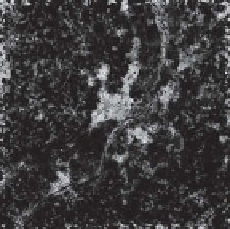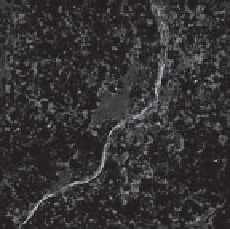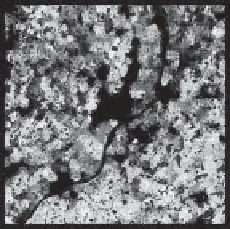Image Processing Reference
In-Depth Information
where
x
denotes the gray level in a point and the
λ
i
are functions determined so that
the complement of the classes is defined by the same formula and so that the order
in which the functions are in is untouched. By choosing, for example, the simplest
complementation
c
(
a
)=1
[0
,
1], and by stating that the complement of a
class
C
i
is also the union of the classes
C
k
for
k
−
a
for
a
∈
=
i
(in a closed world), we get:
1
f
i
(
x
)+
f
i
(
x
)
λ
i
(
x
)=
[8.108]
with:
f
i
(
x
)=max
k
=
i
f
k
(
x
)
.
[8.109]
The results obtained by this method are illustrated in Figure 8.13 and show that
the resulting membership functions present the behavior we expected.
For fusion, an adaptive operator is defined by the combination of a t-norm
t
and
a t-conorm
T
,as
t
1
−
γ
T
γ
. This operator, sometimes referred to as the compensation
operator, can vary between the t-norm for
γ
=0and the t-conorm for
γ
=1. The
operator defined in [CHA 95] is special because
γ
is defined locally, in each point, as
a function
H
i
(
x
) which is a function of a normalized conjunction of the membership
degrees of
x
. This function is illustrated in Figure 8.14 and its values increase with the
class membership. The t-norm used here is a min and the t-conorm is a max.
i
of the classes of cities on the left,
Figure 8.14.
Images of the parameters
H
rivers in the center and
C
3
on the right
Figure 8.15 illustrates the results obtained with this operator on a detail of the
image (bottom line), which can favorably be compared to those obtained with a simple
t-norm. The decision is made by a maximum of membership degrees in each point.




Search WWH ::

Custom Search